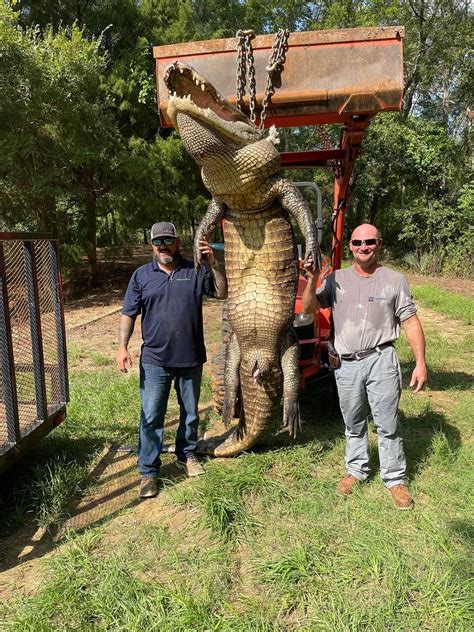
Sheep are increasingly being deployed as cost-effective and environmentally friendly land management tools by ranchers across the United States, offering a sustainable alternative to traditional methods like herbicides and machinery. This practice, known as targeted grazing, not only reduces operational costs but also promotes healthier ecosystems by controlling invasive plant species, reducing wildfire risk, and improving soil health.
Ranchers across the U.S. are turning to woolly landscapers – sheep – to manage vegetation, cut costs, and promote ecological health. This sustainable approach, called targeted grazing, is proving to be a viable alternative to herbicides and heavy machinery, offering economic and environmental benefits. “Sheep are a really good tool for managing vegetation,” states Ryan Mahoney, co-owner of Ranch Lamb, a company utilizing sheep for vegetation management.
Targeted grazing involves strategically deploying sheep to specific areas to consume unwanted vegetation. This method provides a natural and effective way to control invasive species like leafy spurge, cheatgrass, and knapweed, which can outcompete native plants and degrade rangeland. By selectively grazing on these unwanted plants, sheep help restore native plant communities and enhance biodiversity.
Economic Advantages
The economic benefits of using sheep for vegetation management are substantial. Ranchers are reporting significant cost savings compared to traditional methods. The expenses associated with herbicides, including the cost of the chemicals themselves, application equipment, and labor, can be considerable. Similarly, operating and maintaining heavy machinery, such as tractors and mowers, involves fuel costs, repairs, and labor expenses.
According to the Yahoo News article, ranchers are experiencing “significant savings” by using sheep. While the initial investment in acquiring and managing a flock of sheep exists, the long-term operational costs are often lower than those associated with herbicides and machinery. Sheep require minimal maintenance, and their grazing habits naturally fertilize the soil, reducing the need for chemical fertilizers.
Ryan Mahoney, co-owner of Ranch Lamb, emphasizes the economic advantages, stating that sheep offer a cost-effective solution for vegetation control. “We’re seeing significant savings, and we’re also improving the health of the land,” Mahoney said. Ranch Lamb leases out flocks of sheep to various clients, including municipalities, solar farms, and private landowners, providing a turnkey vegetation management service.
Environmental Benefits
Beyond the economic advantages, targeted grazing offers numerous environmental benefits. Herbicides can have detrimental effects on ecosystems, including soil contamination, water pollution, and harm to non-target plant and animal species. Heavy machinery can compact soil, damage vegetation, and contribute to greenhouse gas emissions.
Sheep, on the other hand, provide a more sustainable and environmentally friendly approach. Their grazing habits promote soil health by increasing organic matter, improving water infiltration, and reducing erosion. Sheep also help control invasive species without the use of harmful chemicals, allowing native plants to thrive.
According to the Bureau of Land Management (BLM), targeted grazing can be a valuable tool for reducing wildfire risk. By consuming dry vegetation, sheep reduce the amount of fuel available for wildfires, helping to prevent or mitigate the spread of blazes. The BLM has implemented targeted grazing programs on public lands to manage vegetation and protect ecosystems from fire.
The grazing patterns of sheep also contribute to carbon sequestration. As they graze, sheep stimulate plant growth, which increases the amount of carbon dioxide absorbed from the atmosphere. The carbon is then stored in the soil, helping to mitigate climate change. Studies have shown that well-managed grazing systems can significantly enhance carbon sequestration in rangelands.
Challenges and Considerations
While targeted grazing offers numerous benefits, it’s essential to acknowledge the challenges and considerations associated with this practice. Managing a flock of sheep requires expertise and careful planning. Ranchers must consider factors such as the type and amount of vegetation to be grazed, the size of the flock, the grazing period, and the terrain.
Predator control is another critical consideration. Sheep are vulnerable to predators such as coyotes, wolves, and mountain lions. Ranchers must implement measures to protect their flocks, such as using guard dogs, fencing, and herding. Non-lethal predator control methods are increasingly favored to minimize the impact on wildlife populations.
Water availability is also a crucial factor. Sheep require access to fresh water, especially during hot weather. Ranchers must ensure that adequate water sources are available in the grazing areas. In arid or semi-arid regions, water may need to be transported to the grazing sites.
Expanding Adoption
Despite the challenges, targeted grazing is gaining popularity among ranchers and land managers across the United States. As awareness of the economic and environmental benefits grows, more and more individuals and organizations are adopting this sustainable practice.
Municipalities are using sheep to manage vegetation in parks, open spaces, and along roadways. Solar farms are employing sheep to control vegetation under solar panels, reducing the need for mowing and herbicide application. Private landowners are using sheep to manage vegetation on their properties, improving the health of their land and reducing their reliance on chemicals.
The increasing demand for targeted grazing services has created new business opportunities for ranchers and entrepreneurs. Companies like Ranch Lamb are providing turnkey vegetation management services, offering sheep and experienced herders to clients who want to utilize this sustainable approach.
Case Studies
Several case studies illustrate the effectiveness of targeted grazing in different regions of the United States.
- Leafy Spurge Control in Montana: Leafy spurge is a noxious weed that infests millions of acres of rangeland in Montana. Sheep have proven to be an effective tool for controlling leafy spurge populations. Studies have shown that targeted grazing can reduce leafy spurge cover by as much as 80 percent, allowing native plants to recover.
- Cheatgrass Reduction in Nevada: Cheatgrass is an invasive annual grass that increases wildfire risk in the Great Basin region of Nevada. Sheep grazing can reduce cheatgrass biomass, decreasing the amount of fuel available for wildfires. Targeted grazing has been used to create firebreaks and protect critical habitats.
- Riparian Restoration in Oregon: Targeted grazing can also be used to restore riparian areas, which are the vegetated areas along streams and rivers. Sheep grazing can remove dense vegetation that blocks sunlight and reduces water flow, allowing native plants to regenerate.
Future Trends
The future of targeted grazing looks promising. As technology advances, new tools and techniques are being developed to improve the efficiency and effectiveness of this practice.
- GPS Tracking: GPS tracking devices can be used to monitor the movement of sheep and ensure that they are grazing in the desired areas. This technology allows ranchers to optimize grazing patterns and prevent overgrazing.
- Remote Sensing: Remote sensing technologies, such as drones and satellites, can be used to assess vegetation cover and identify areas that need grazing. This information can help ranchers make informed decisions about grazing management.
- Precision Grazing: Precision grazing involves using data and technology to manage grazing at a very fine scale. This approach allows ranchers to tailor grazing practices to specific areas, maximizing the benefits for both the environment and the livestock.
Conclusion
Targeted grazing with sheep is emerging as a valuable and sustainable land management tool. By providing cost-effective vegetation control, promoting ecological health, and reducing reliance on harmful chemicals, sheep are proving to be effective woolly landscapers. As awareness of the benefits of targeted grazing grows, this practice is likely to become even more widespread in the years to come, offering a win-win solution for ranchers, land managers, and the environment.
Expanded Context and Additional Details:
The rise of sheep as “weed whackers” represents a significant shift in land management practices, reflecting a growing awareness of the interconnectedness of economic viability and environmental stewardship. Beyond the immediate cost savings and ecological benefits, the use of sheep in targeted grazing contributes to broader sustainability goals, including reducing reliance on fossil fuels, promoting biodiversity, and enhancing ecosystem resilience.
Historical Perspective:
The practice of grazing livestock to manage vegetation is not new. For centuries, ranchers have used cattle, sheep, and goats to control weeds and improve rangeland conditions. However, the modern concept of targeted grazing emphasizes a more strategic and science-based approach.
Early grazing practices often focused on maximizing livestock production, with less attention paid to the ecological consequences. Overgrazing was a common problem, leading to soil erosion, loss of native vegetation, and degradation of water resources.
In recent decades, researchers and land managers have developed a better understanding of the ecological impacts of grazing. Targeted grazing emerged as a way to harness the benefits of livestock grazing while minimizing the negative impacts. This approach involves carefully planning grazing strategies to achieve specific ecological objectives, such as controlling invasive species, restoring native plant communities, and reducing wildfire risk.
The Role of Breeds:
The effectiveness of targeted grazing depends, in part, on the breed of sheep used. Some breeds are better suited for controlling specific types of vegetation or for grazing in particular environments.
For example, some breeds of sheep are more resistant to poisonous plants, allowing them to graze in areas where other livestock would be at risk. Other breeds are more adept at navigating steep terrain or grazing in dense vegetation.
Ranchers often select breeds of sheep based on their specific vegetation management goals and the characteristics of the grazing environment.
The Importance of Management:
While sheep can be effective weed whackers, their success depends on careful management. Overgrazing can still occur if sheep are not properly managed, leading to the same negative consequences as traditional grazing practices.
Ranchers must carefully monitor the grazing patterns of their sheep and adjust their management strategies as needed. Factors to consider include the amount of vegetation consumed, the condition of the soil, the presence of native plants, and the risk of predator attacks.
Adaptive management is a key principle of targeted grazing. This approach involves continuously monitoring and evaluating the effectiveness of grazing practices and making adjustments as needed based on the results.
Policy and Incentives:
Government policies and incentives can play a significant role in promoting the adoption of targeted grazing.
The U.S. Department of Agriculture (USDA) offers several programs that provide financial and technical assistance to ranchers who implement sustainable grazing practices. These programs can help ranchers cover the costs of fencing, water development, and other infrastructure improvements.
State and local governments also offer incentives for targeted grazing. For example, some states provide tax credits or subsidies to ranchers who use sheep to control noxious weeds.
Community and Collaboration:
Targeted grazing often involves collaboration between ranchers, land managers, and community members.
Ranchers may lease their sheep to municipalities or private landowners to manage vegetation on their properties. Land managers may work with ranchers to develop grazing plans that meet specific ecological objectives. Community members may participate in volunteer efforts to monitor grazing practices or help with predator control.
Collaboration is essential for ensuring the success of targeted grazing and for building support for this sustainable practice.
The Future of Rangeland Management:
Targeted grazing with sheep represents a promising approach to rangeland management. By combining the economic benefits of livestock grazing with the ecological benefits of sustainable land management, this practice can help maintain healthy rangelands for future generations.
As technology advances and our understanding of rangeland ecosystems grows, targeted grazing is likely to become even more sophisticated and effective. This approach offers a valuable tool for addressing the challenges of climate change, invasive species, and wildfire risk.
Ethical Considerations:
While targeted grazing offers a sustainable alternative to chemical herbicides, it is also essential to consider the ethical implications of using animals for land management.
Animal welfare is a key concern. Sheep must be treated humanely and provided with adequate food, water, and shelter. Ranchers must also take steps to protect their sheep from predators and diseases.
Some animal rights advocates argue that using animals for any purpose is inherently unethical. However, proponents of targeted grazing argue that it can be a mutually beneficial relationship, where sheep contribute to ecosystem health while also providing ranchers with a sustainable source of income.
Integrating with Other Land Management Practices:
Targeted grazing is most effective when integrated with other land management practices. For example, prescribed burning can be used to reduce fuel loads and promote the growth of native plants. Herbicides can be used selectively to control particularly stubborn weeds.
By combining targeted grazing with other management tools, land managers can create a comprehensive approach to rangeland management that addresses a wide range of ecological challenges.
Addressing Climate Change:
Rangelands play a crucial role in mitigating climate change by sequestering carbon in the soil. Well-managed grazing systems can enhance carbon sequestration, helping to reduce greenhouse gas emissions.
Targeted grazing can also help rangelands adapt to the impacts of climate change. By promoting healthy plant communities and improving soil health, this practice can make rangelands more resilient to drought, wildfire, and other climate-related disturbances.
Promoting Biodiversity:
Rangelands are home to a diverse array of plant and animal species. Targeted grazing can help maintain and enhance biodiversity by controlling invasive species, restoring native plant communities, and creating habitat for wildlife.
By selectively grazing on unwanted vegetation, sheep can create opportunities for native plants to thrive. This, in turn, can benefit a wide range of animal species that depend on native plants for food and shelter.
Reducing Wildfire Risk:
Wildfires are a growing threat to rangelands across the United States. Targeted grazing can help reduce wildfire risk by removing dry vegetation that serves as fuel for fires.
By strategically grazing sheep in areas prone to wildfires, land managers can create firebreaks and protect critical habitats. This approach can be particularly effective in reducing the intensity and spread of wildfires.
Frequently Asked Questions (FAQ)
-
What is targeted grazing?
Targeted grazing is a land management practice that uses livestock, primarily sheep, to graze specific areas to achieve specific ecological or economic goals. This can include controlling invasive plant species, reducing wildfire risk, improving soil health, and restoring native plant communities. Unlike traditional grazing, targeted grazing is carefully planned and managed to achieve specific objectives, focusing on the timing, intensity, and frequency of grazing.
-
How is targeted grazing different from traditional grazing?
Traditional grazing often focuses on maximizing livestock production, potentially leading to overgrazing and negative environmental impacts. Targeted grazing, conversely, prioritizes specific land management goals. It employs adaptive management strategies, monitoring and adjusting grazing practices based on ecological outcomes. This approach aims to benefit both livestock and the environment.
-
What are the economic benefits of using sheep for targeted grazing?
The economic benefits of using sheep for targeted grazing include reduced costs for herbicides and machinery. Ranchers can save money on chemical application, fuel, maintenance, and labor. Additionally, sheep naturally fertilize the soil, reducing the need for chemical fertilizers. Some ranchers are also finding opportunities to lease their sheep for vegetation management, creating a new revenue stream.
-
Are there any environmental concerns associated with targeted grazing?
While generally environmentally beneficial, targeted grazing requires careful management to avoid potential negative impacts. Overgrazing can lead to soil erosion, loss of native vegetation, and water pollution. Predator control measures can also impact wildlife populations. Therefore, proper planning, monitoring, and adaptive management are crucial to ensure that targeted grazing is implemented sustainably. Responsible ranchers are increasingly utilizing non-lethal predator control methods and carefully managing grazing intensity.
-
What types of organizations or landowners can benefit from using sheep for targeted grazing?
A wide range of organizations and landowners can benefit from targeted grazing. Municipalities can use sheep to manage vegetation in parks and along roadways. Solar farms can employ sheep to control vegetation under solar panels. Private landowners can use sheep to manage vegetation on their properties. Ranchers can use targeted grazing to improve rangeland health and reduce wildfire risk. Government agencies, such as the Bureau of Land Management (BLM), also use targeted grazing on public lands.









